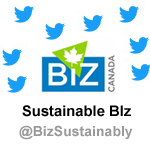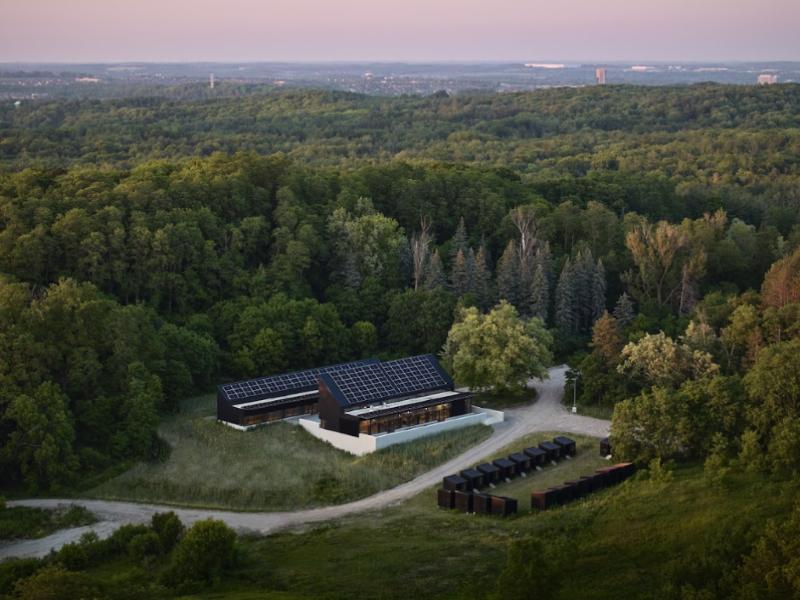Recent Articles
Why demand for green banks is growing
Why demand for green banks is growing
For a commercial or residential developer seeking to install solar panels or make energy efficiency improvements to a building, getting financing from a traditional bank often can be a challenge. That’s largely because of the initial startup costs required to take on these projects as well as that it might take years before developers are able to make a profit from that investment.
The benefits to companies that issue green bonds
There has been tremendous growth in green bonds as the benefits become more apparent to both investors and issuers. Last year, almost twice as many green bonds as expected were issued, and in the first quarter of 2017, issuance stood at $21.76 billion, up nearly 42 percent from the same period last year. The OECD estimates that the green bond market could increase to $4.7 trillion to $5.6 trillion in outstanding bonds by 2035.
Seven takeaways from a summit of insurers and city leaders
Insurance is a tool that can be used to help achieve SDG 11 on building safe, resilient and inclusive cities. And city leaders are urged to start understanding their risks and how to reduce these. For the insurance industry, the global trend toward urbanisation means a lot of new business.
Unchecked consumption is not an option
The Elephant in the Boardroom: Why Unchecked Consumption is Not an Option in Tomorrow’s Markets is a new working paper from the World Resource Institute (WRI) that can guide discussion within companies about an uncomfortable truth: many of today’s business models are not fit for tomorrow’s resource-strained world.
World Resource Institute – The Elephant in the Boardroom – TreeHugger
UT recycles 25 tons of waste from one football game
The University of Tennessee spent almost $900,000 in 2007 to send its trash to a landfill. At that time, campus-wide recycling represented 9 percent of total waste. Ten years later, UT spends less than $400,000 a year transporting trash – saving a full $500,000 annually – and recycles about 30 percent of total waste.
Multi-family, purpose-built rental builder leads way
On January 29th, 2016, Scott Butler, President of Highstreet Ventures Inc., called a team meeting to discuss company updates, strategic priorities, and next steps. On the surface, this would appear as any other meeting at Highstreet. Since its inception in 2005, one of the company’s key principles has been driven by their commitment to creating aligned interests for employees, partners, and investors.
Net zero homes priced under $400,000 arrive in Edmonton
Net zero energy homes, homes that produce as much energy as they consume on an annual basis, have typically been reserved for individuals with a deep commitment to sustainable living or those willing to invest a fair sum of money towards energy efficiency. Landmark Homes is changing that.
 |
The future of self-sustaining eco-communities? |
| There is no longer any doubt left that finding more sustainable ways to live are crucial to ensure the continued survival of our planet. And that is exactly what the ReGen Village project aims to achieve. | |
| Jets on Green, May 8, 2017 |
Calgary company has mission for green buildings
As a teenager in the U.K., Matt Grace started to read about climate change and the need for a new approach to the planet’s energy needs. He decided the best way to contribute was to become an engineer and earned an undergraduate degree in aeronautical engineering at the University of Manchester.
The future of schools: Net zero should be the norm
There is a shifting era when it comes to energy today. That momentum can be appreciated when we see the vision for efficiency and renewables and understand the impact this shift can have on future generations. In Alberta, the next generation has high expectations for climate leadership. It’s clear that we need to make good decisions today to meet the needs of our future.
Vancity publishes 7th integrated annual report
Vancity’s latest integrated Annual Report, Vancity in 2016: building on our values, demonstrates how being firmly rooted in local communities can deliver strong financial returns. Incorporating Vancity’s support for the United Nations Sustainable Development Goals, the annual report transparently outlines progress against key organizational targets and commitments.
Two-thirds of electricity now comes from renewable energy
Two-thirds of Canada’s electricity supply now comes from renewable sources such as hydro and wind power, according to the National Energy Board. Renewable energy production jumped 17 per cent between 2005 and 2015. The portion of all electricity in Canada generated by renewables is now 66 per cent, up from 60 per cent a decade earlier.
 |
Prince Rupert lags on GHG emissions targets |
| The City of Prince Rupert is lagging behind its greenhouse gas (GHG) emission reduction targets, but a new plan aims to change that. Currently, the city’s GHG emissions are 16 per cent above its 2020 target. | |
| The Northern View, May 16, 2017 |
Rethinking waste from New York to Beijing
It would be difficult to find a more fundamental urban environmental issue than solid waste disposal. It is clear that effective waste management is essential to the development of sustainable cities. Many cities around the world are implementing innovative measures to deal with waste and are increasingly incorporating waste management into sustainability plans.
The business case for pollinator-friendly solar sites
A critical opportunity is being largely overlooked on solar sites developed on farmland and outside of the desert Southwest — there has been too much focus on the hardware and not enough consideration of the vegetation under and around the panels. Some folks don’t like living next to solar arrays, particularly when the array is “solar-centric” in design (gravel covering the site).
Estimates of CO2 by building occupants may be inaccurate
A method to estimate the amount of CO2 generated by building occupants since the early 1980s may be off by as much as 25%. Researchers at the National Institute of Standards and Technology (NIST) and George Mason University say the old formula relies on old data and a method lacking scientific documentation.
Potential shading on Boston Common raises controversy
Boston Mayor Marty Walsh is among those catching heat from critics of a proposed 775-foot residential and commercial tower that requires a change in a state law restricting structures from casting shadows on the city’s historic common. Walsh wants to sell a city-owned parcel containing a parking garage east of the common to a developer.
Residential Real Estate
A dumb home needs a smart wall
A few years ago when everyone was writing about the smart home, I wrote In praise of the dumb home, which is so well insulated with temperatures so stable that a Nest smart thermostat would be bored stupid. But designing the walls for a dumb home is not as simple as simply adding insulation; you have to be smart about managing moisture and condensation.
Green building ratings
How your LEED v4 project can achieve Parksmart certification
Does your LEED v4 O+M or BD+C project include a parking structure? If so, you may already be well on your way to also achieving Parksmart certification. GBCI’s recently released Synergies Between Parksmart and LEED guidance document highlights the LEED credits that are applicable to, and demonstrate achievement toward, Parksmart certification.
Corporate Sustainability
Do women hold the key to responsible investment?
Women are more likely to invest in responsible businesses than men. So the involvement of women in building the companies that are building a sustainable world is critical, writes Jessica Robinson. One good thing to come out of the political dysfunction we are seeing around the world is that more and more women are responding to global issues with renewed passion and unity.
Cities and Towns
Boston tops list of most energy efficient U.S. cities
Boston remains the top U.S. city for energy efficiency – receiving 84.5 out of a possible 100 points in the third edition of the City Energy Efficiency Scorecard, released on May 10 by the American Council for an Energy-Efficient Economy. That’s an improvement of 2.5 points over its score in the 2015 study. The researchers looked at 51 metropolitan areas for the 2016 scorecard.
Public Transit
Three revolutions in urban transportation coming down the road
What effect will self driving cars, or autonomous vehicles (AVs) have on our cities and the way we all live. It is all over the map; will they be shared, meaning there will be far fewer cars and greener cities with parks instead of parking lots? Or will they lead to endless sprawl as they take the pain out of commuting? Are they revolutionary or are they just more of the same old?
Other
 |
Sustainable Biz followers on Twitter |
| Follower The Buildings Performance Institute EU is a Brussels based think-tank delivering policy analysis, advice and implementation support for buildings energy performance. | |
| Follow BizSustainably, the most comprehensive news feed on Twitter for Canadian business concerned about sustainability. |
 Industry Events
Industry Events
-
ECO IMPACT 2026
Feb 19 2026
to Feb 20 2026
The Westin Calgary
-
BuildGreen Atlantic
Apr 27 2026
to Apr 28 2026
Halifax, NS
-
The Evergreen Conference
May 06 2026
to May 07 2026
Toronto, ON
-
Building Lasting Change
Jun 17 2026
to Jun 19 2026
Montréal, QC
-
Retrofit Canada Conference
Jun 24 2026
to Jun 25 2026
Halifax Convention Center









